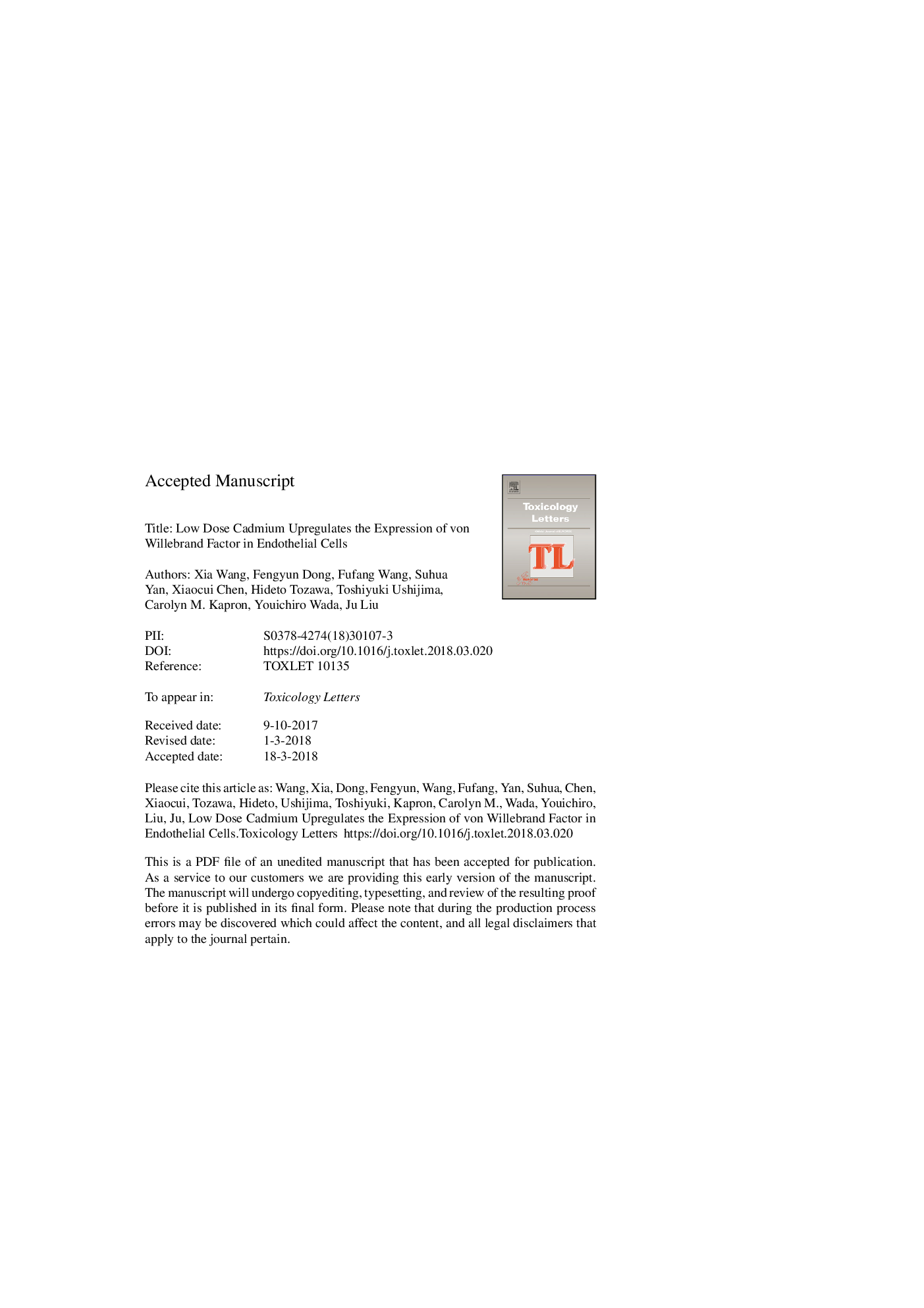| Article ID | Journal | Published Year | Pages | File Type |
|---|---|---|---|---|
| 8553279 | Toxicology Letters | 2018 | 37 Pages |
Abstract
Cadmium (Cd) is a persistent and widespread environmental pollutant of continuing worldwide concern. Previous studies have suggested that Cd exposure increases the risk of cardiovascular diseases, such as atherosclerosis and hypertension. However, the underlying mechanisms are poorly understood. In this study, we observed that low dose Cd treatment induced von Willebrand factor (vWF) expression in vascular endothelial cells in mouse lung and kidney tissues. In vitro analysis showed that 1â¯Î¼M Cd specifically upregulated vWF mRNA and protein expression in human umbilical vein endothelial cells (HUVECs), indicating that Cd targets vascular endothelial cells even at relatively low concentrations. Further study demonstrated that nuclear factor kappa B (NF-κB) and GATA3, two established transcription regulators of the vWF gene, were not altered in the presence of Cd. However, ETS-related gene (ERG) was significantly induced by 1â¯Î¼Mâ¯Cd. When ERG was knocked down by siRNA, Cd induced upregulation of vWF was totally blocked. Chromatin immunoprecipitation (ChIP) assay showed that Cd increases the binding of ERG on the â56 ETS motif on the human vWF promoter. These results indicated that ERG mediated the increased expression of vWF by Cd. Since vWF is a key regulator for vascular homeostasis, our findings may provide a novel mechanism for understanding low dose Cd induced development of vascular diseases.
Keywords
vWFoctamer-binding proteintris buffered saline with tween-20NFYETS-related geneSMCsVWDTBSTIκBqRT-PCRNF-κBHUVECSERGCTRLFBSNFIPBSECsSmall interfering RNAsiRNAOctchromatin immunoprecipitationvon Willebrand diseasetumor necrosis factor-αTranscriptionfetal bovine serumHuman umbilical vein endothelial cellsVascular smooth muscle cellsEndothelial cellsVon Willebrand factorNuclear factor YTNF-αnuclear factor kappa BPhosphate-buffered salineinhibitor κBquantitative real-time polymerase chain reactionCHiPCadmiumControl
Related Topics
Life Sciences
Environmental Science
Health, Toxicology and Mutagenesis
Authors
Xia Wang, Fengyun Dong, Fufang Wang, Suhua Yan, Xiaocui Chen, Hideto Tozawa, Toshiyuki Ushijima, Carolyn M. Kapron, Youichiro Wada, Ju Liu,
